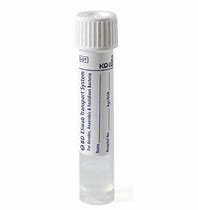Female Urogential Culture for Gardnerella vaginalis, Strep B and Yeast
POWERCHART ORDER -Genital Culture-Female
Useful For
Accurate diagnosis of genital infections depends on the separation of microbial pathogens from normal genital microbiota. The organisms colonizing the female genital tract have been studied extensively and include: lactobacilli, diptheroids, G. vaginalis, coagulase negative staphylococci, S. aureus, S. agalactiae, Enterococci, gamma and viridans streptococci, E.coli, and yeast. However, many female genital tract infections arise from endogenous microorganisms, the pathogenicity of which had been activated by host factors and other microorganisms.
The most common clinical syndrome, for which cultures are submitted, is vulvovaginitis. Yeast (C. albicans), Gardnerella vaginalis, and Trichomonas vaginalis are the most common agents. The single most common cause of cervicitis is N. gonorrhoeae, although chlamydia, herpes simplex virus, T. vaginalis and other pathogens (Actinomyces, Capnocytophaga, BSB) may also be implicated. Urethritis is also most commonly by N. gonorrhoeae. Non-gonococcal urethritis (NGU) usually involves chlamydia, ureaplasma or E. coli and other enteric GNB, Group B strep, enterococci, and anaerobes. Other pathogens, which may be recovered from female urogenital cultures include: S. aureus, Group A strep, Listeria and Haemophilus.
The scope of the routine urogenital culture is limited to bacterial pathogens only
Method Name
Culture
Aliases
Urogenital Culture - Female; Female Genital Culture; Vaginal Culture; Genital Culture - Female, Female, Genital, C Genital Female
Specimen Type
Swabs of the cervix or vaginal canal are the most commonly submitted specimens. All specimens must be completely labeled with the patient’s name, source of the specimen, date of birth, and date of collection. Submit in an Eswab and transport to the laboratory ASAP at room temperature. Specimens must be received within 48 hours of collection. Note: Neisseria gonorrhea is only viable for 24 hours in an E-swab.
Swabs or samples of the placenta or products of conception are also sometimes submitted for culture. If these were obtained via vaginal delivery, they are considered to be vaginally contaminated, and are worked up as routine urogenital specimens. Because anaerobic flora is endogenous to the vaginal canal, only surgically collected specimens are appropriate for anaerobic workup.
Specimen Required
- Culturette or E-swab of vagina, cervix, urethra, or drainage from these sites.
- Also, swabs of vaginally delivered placenta or amniotic fluid are acceptable.

Specimen Minimum Volume
- 1 culturette swab
- 1 minitip swab
Specimen Stability Information
- Transport at room temperature.
- Culturette or E-swab are stable for 48 hours after collection.
- *NOTE* Specimens that do not meet the above criteria will be rejected.
Rejected Due To
- Not transported at room temperature.
- Culturette or E-swab not received within 48 hours after collection.
- *NOTE* Specimens that do not meet the above criteria will be rejected.Not
Special Instructions
- Specimens must be labeled with complete source and body site information.
- Exam includes direct smear (gram stain).
- Female genital cultures are collected primarily to screen for the most common vaginal pathogens: Gardnerella vaginalis (bacterial vaginosis) and yeast (Candidiasis or Monillia) and to detect fecal contamination or carriage of Group B strep.
- Susceptibility testing is not routinely performed.
- NOTE: For specimens submitted to rule out GC (Neisseria gonorrhoeae), please refer to GC Culture requirements or GC-DNA Probe requirements.
- For Internal Genital Specimens (Uterus, Endometrium, Bartholin etc.), see Aspirate/Tissue Culture or Wound Culture -Surgical
Performing Laboratory
Glens Falls Hospital microbiology Laboratory
Reference Values
N/A
Day(s) and Time(s) Performed
- Day Shift
- 7 days per week
Analytical Time
Up to 3 days
Specimen Retention Time
72 hours
Analytical Time
Up to 3 days
